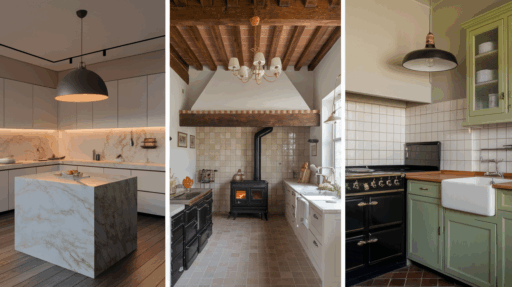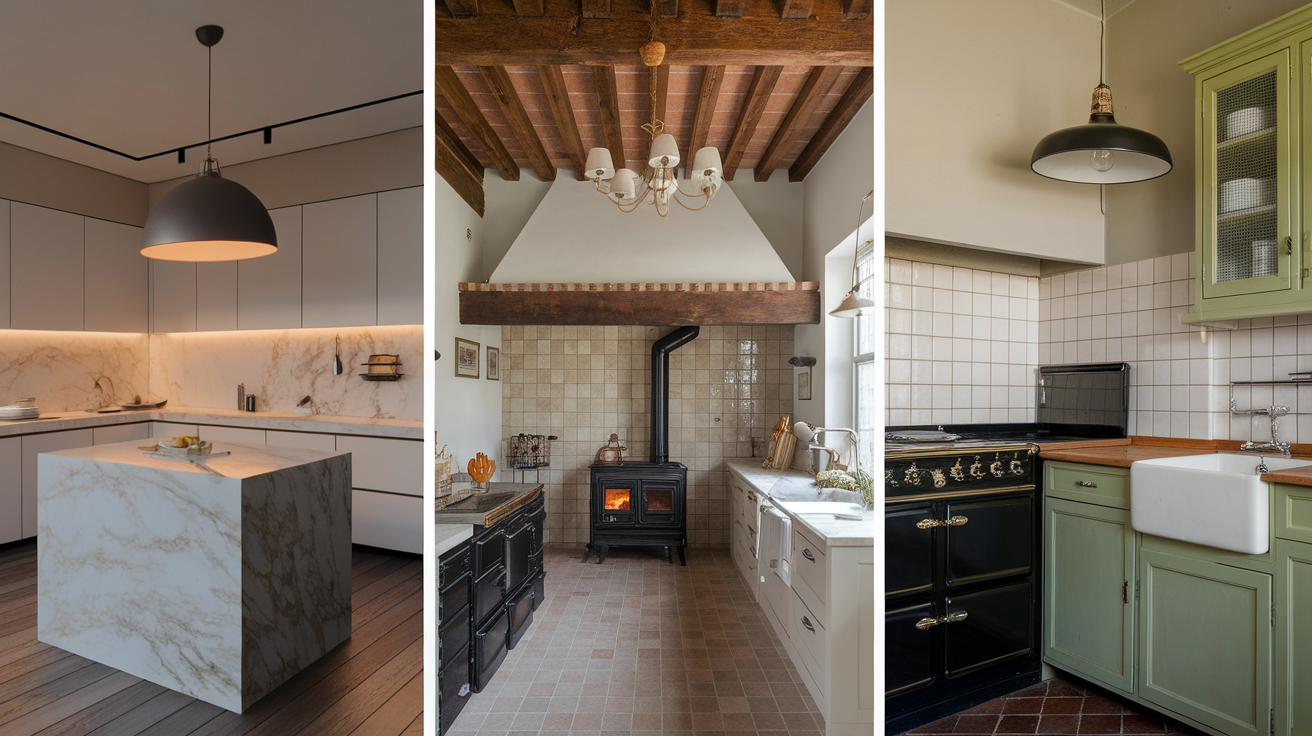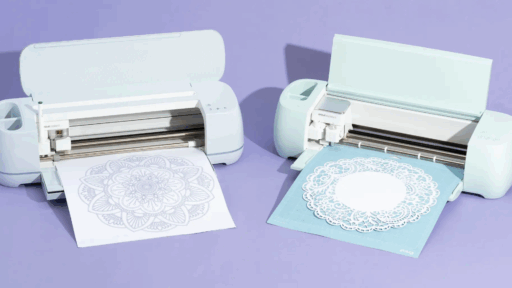Lighting can change everything in a kitchen. It’s not just about seeing what you’re doing – it’s about making the space feel warm, bright, and easy to work in.
The right kitchen lighting helps you chop, cook, clean, and even relax with your family.
I’ve learned that one good light isn’t always enough. Most kitchens need more than one kind of light to look and work their best.
In this blog, we’ll go over the best kitchen lighting ideas, from ceiling lights to cabinet lights and everything in between. I’ll also share a few simple tips that make a big difference.
If you’re doing a full remodel or want to switch out a few fixtures, there’s something here for every space and budget.
Let’s find the lights that will make your kitchen shine.
Understanding the Three Layers of Kitchen Lighting
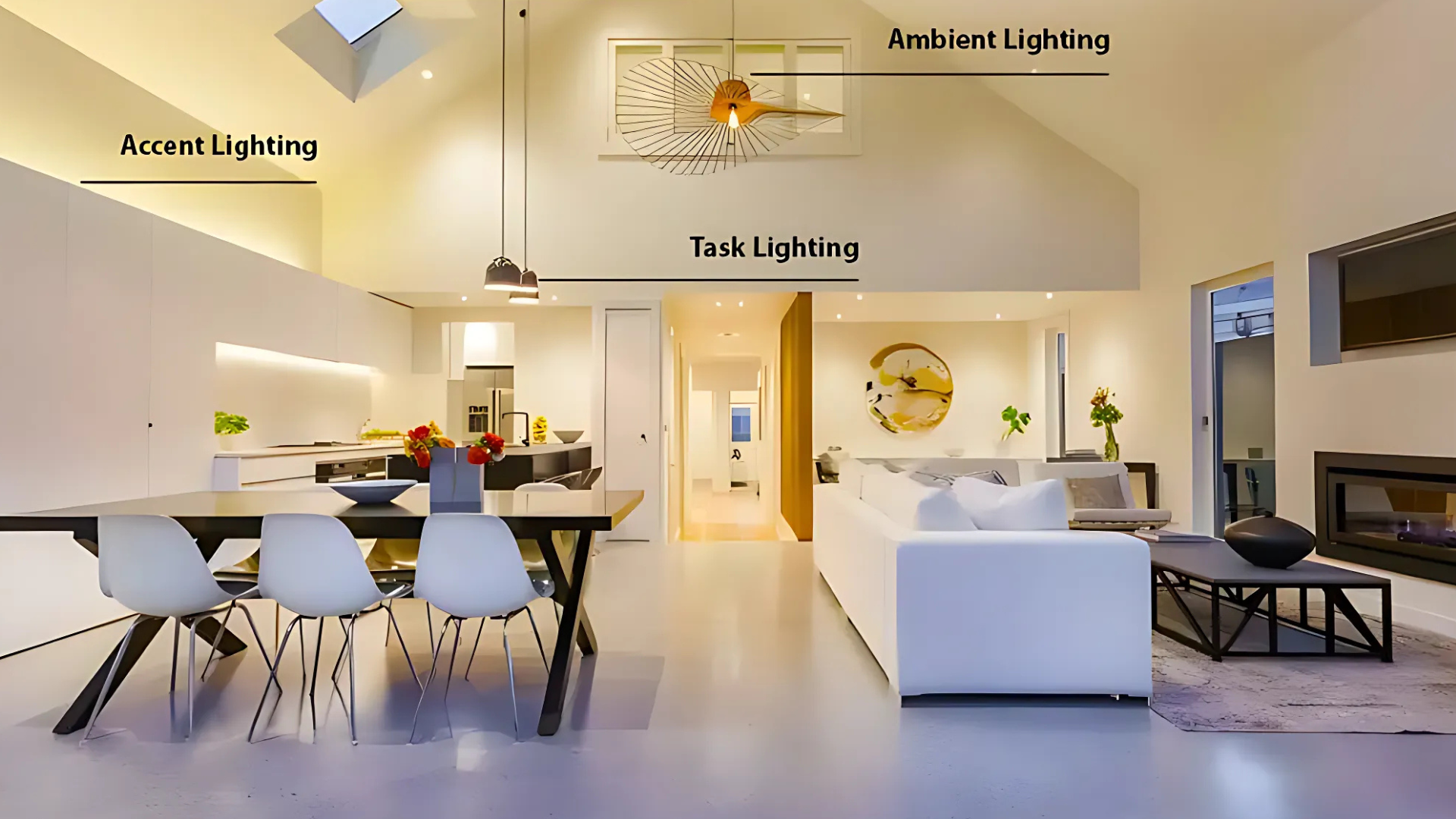
Good kitchen lighting isn’t just about having a bright bulb overhead. It’s really about using three types of light that work together: ambient, task, and accent lighting.
Each one does something different, and together they make your kitchen look great and feel easy to use.
Ambient lighting is your main source of light. It fills the whole room, so you can walk around safely and see everything clearly. Ceiling lights and recessed lights are common choices for this layer.
Task lighting is all about helping you see better when you’re working. Think of lights under the cabinets or pendants over the island. They shine directly on your work area, so you don’t have to struggle to see while chopping or cooking.
Accent lighting adds the finishing touch. These lights highlight certain areas, like glass cabinets or cool design details. I love how they give the kitchen that extra cozy glow.
Now that you know the best lighting ideas, it’s time to brighten up your kitchen your way.
Top Kitchen Lighting Ideas and Fixtures
From ceiling lights to under-cabinet options, the right lighting matters. Below are the top ideas to help you choose the best fixtures:
1. Pendant Lights: Style Meets Function
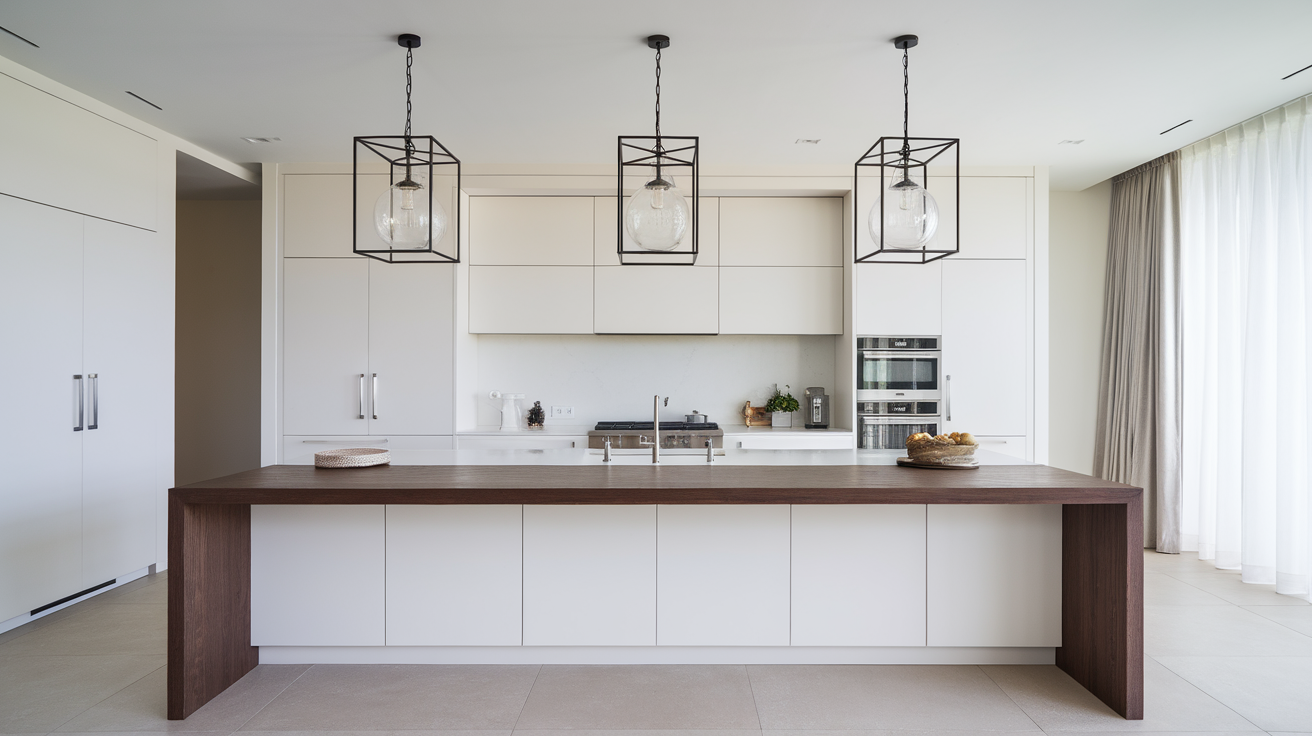
Pendant lights are a popular choice, and for good reason. They offer focused light where you need it most and come in a wide variety of shapes, sizes, and styles.
Where to use them:
- Over kitchen islands
- Above breakfast bars
- Over small dining tables
- In a row for a dramatic touch
Styles to consider:
- Glass pendants: clean, airy, and great for smaller spaces
- Metal dome pendants: focused lighting with a modern or industrial look
- Lantern-style pendants: perfect for farmhouse or rustic kitchens
- Globe pendants: soft and balanced light for a cozy feel
- Drum pendants: large and bold, great for making a statement
My tip: I love hanging two or three matching pendants over a kitchen island. They light the space evenly and help divide the room in open layouts. Just be sure to keep the pendant at a height of around 30–36 inches above the counter.
2. Under-Cabinet Lighting: Enhancing Visibility
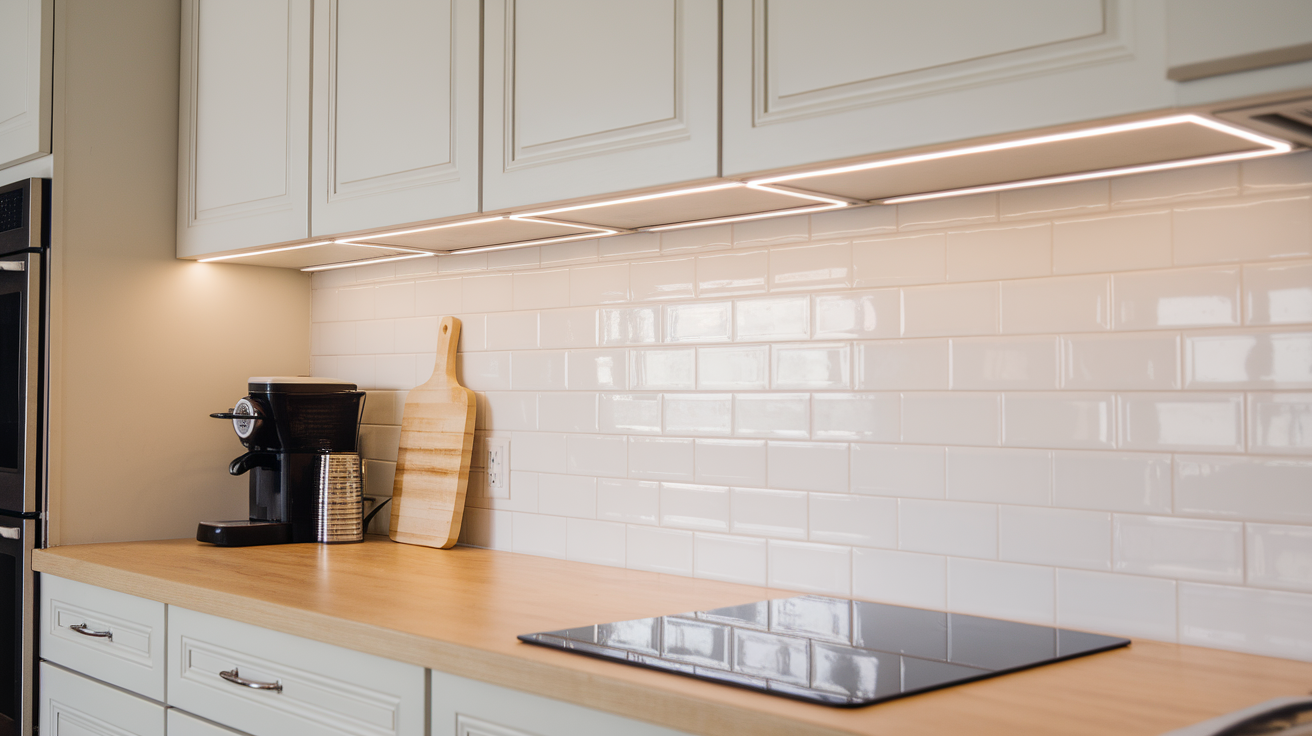
If you only add one new type of lighting to your kitchen, make it under-cabinet lighting. These lights sit beneath your upper cabinets and shine directly onto your countertops.
Why I recommend it:
- It makes tasks like chopping and mixing easier
- It brightens dark spots where overhead lighting doesn’t reach
- It adds a soft, cozy glow at night
Options include:
- LED strip lights: energy-efficient, long-lasting, and easy to install
- Puck lights: round, small fixtures for focused beams
- Light bars: rigid strips for even, bright light
Choose 3000K for a warm glow or 4000K for a cleaner, white light. I once installed warm white strips in a kitchen with wood cabinets, and the whole space looked cozier right away.
3. Recessed Lighting: Sleek and Unobtrusive

Recessed lights are built into the ceiling, so they don’t hang down or take up any space. They’re perfect for general lighting and look especially good in modern or minimalist kitchens.
Best uses:
- Even lighting across the ceiling
- Highlighting walkways or open spaces
- Pairing with pendant or cabinet lights
Design tip:
- Use dimmable recessed lights to control brightness
- Space them 3–5 feet apart
- Position them 24 inches from the wall for balanced light
Recessed lighting does a great job of filling in the background. I always suggest combining them with other lights so your kitchen doesn’t feel too flat or cold.
4. Chandeliers and Statement Fixtures: Adding Elegance

A chandelier in the kitchen? Yes, really! Statement fixtures can bring a touch of elegance or fun, depending on what you pick. They work especially well in large kitchens, over tables, or in open-concept spaces.
Where they shine:
- Over eat-in kitchen tables
- In open kitchens that flow into the living area
- When paired with simpler task lighting
Styles I’ve seen work beautifully:
- Modern geometric chandeliers for clean, high-end kitchens
- Rustic wood and iron chandeliers for a cozy farmhouse vibe
- Crystal or beaded chandeliers for glam kitchens
- Multi-arm fixtures that mimic candlelight for a warm, classic look
Placement advice: Keep the bottom of your chandelier about 30–34 inches above your table or island. Make sure the width of the fixture matches the space, so it feels balanced.
5. Flush Mount and Semi-Flush Mount Fixtures: Low Ceilings, Big Impact

If your kitchen has low ceilings, don’t worry – you can still add style and light with flush or semi-flush mount ceiling fixtures.
Flush mount lights sit tight against the ceiling. Semi-flush mounts hang down just a few inches.
Great for:
- Small kitchens
- Apartments or condos
- Galley-style layouts
Fixture ideas:
- White glass dome fixtures for a clean, simple look
- Metal-and-glass combinations for something more modern
- Wood accents for a touch of warmth in rustic kitchens
I once helped a friend switch out a builder-grade flush mount for a semi-flush brass fixture with three bulbs – and her kitchen felt brand new with just that small change.
6. Track Lighting: Adjustable and Modern

Track lighting is a flexible way to add both task and accent lighting. Each light on the track can be aimed in a different direction, which is perfect for long kitchens or kitchens with unique layouts.
Best uses:
- Galley kitchens
- Kitchens with angled ceilings
- Highlighting art, open shelving, or islands
Styles to try:
- Minimal black tracks for modern kitchens
- White or brushed nickel for a clean, traditional look
- Curved tracks for a soft, modern design
Track lights give you control. You can highlight your sink one day and your baking station the next. I like them in kitchens that don’t have space for a lot of different light types.
7. Toe-Kick Lighting: Small Touch, Big Style

Toe-kick lights are LED strips installed along the bottom edge of your base cabinets. They may sound fancy, but they’re easy to install and make a big impact.
Why you’ll love them:
- They add a soft night light
- They highlight your kitchen’s layout
- They make the space feel more custom and high-end
Popular choices:
- Motion-activated strips for automatic night lights
- Colored LEDs for fun, modern kitchens
- Warm white strips for a cozy evening glow
They’re subtle, but they make a big difference. Once you see toe-kick lighting in a kitchen, you’ll wonder why you didn’t try it sooner.
With the right lighting, your kitchen becomes more than just a place to cook – it becomes a space you love to be in. Take your time and choose fixtures that match your style and needs.
Choosing the Right Light Bulbs for Your Kitchen
Light bulbs might seem like a small part of your kitchen, but they actually make a big difference. The right bulb affects how colors look, how cozy the space feels, and how easy it is to cook or clean.
If your kitchen feels too yellow or too harsh, switching the bulb could be the fix. Let’s look at the key features you should think about.
| Feature | What It Means | Best Choice for Kitchen |
|---|---|---|
| Brightness (Lumens) | Measures how bright the light is. More lumens = brighter light. | 5,000–10,000 lumens total for all fixtures |
| Wattage | Shows how much energy the bulb uses. Not the same as brightness. | Lower watts with high lumens = energy-efficient |
| Color Temperature | How warm or cool the light looks (measured in Kelvin/K). | 2700K–3000K = warm, cozy / 4000K–5000K = clean, white light |
| CRI (Color Rating Index) | Tells how true colors look under the bulb. Higher is better. | 80+ for kitchens to see food and surfaces clearly |
| Bulb Type | Different bulb styles work in different fixtures and offer various lifespans. | LED is best – long-lasting, cool, and energy-saving |
| Dimmable or Not | Can the bulb’s brightness be adjusted? | Choose dimmable for mood and control |
| Smart Bulbs | Can be controlled by phone or voice; some change color or schedule. | Great for modern kitchens and flexibility |
When I swapped out a warm yellow bulb for a cooler LED in my kitchen, it instantly felt cleaner and brighter. You don’t have to change everything – just start with one bulb and see how it changes the space.
With the right bulbs, your kitchen will not only look better, but it’ll also work better for everything you do.
Kitchen Lighting Tips and Best Practices
The best kitchen lighting doesn’t come from just one type of fixture. It’s all about layering, planning, and thinking about how you use the space each day.
1. Layering Lights for Depth and Functionality
One of the most important things to remember is that no single light can do it all. You need to use different types of lighting together. This is called layering.
For example, overhead recessed lights give you general brightness, pendant lights over your island help with tasks, and under-cabinet lights make prepping and cooking easier.
Together, they make your kitchen feel complete. When all three types – ambient, task, and accent – are used, the space becomes more balanced and visually comfortable.
2. Incorporating Natural Light
If your kitchen has windows, make the most of them. Natural light is the best kind of light because it’s free, soft, and changes throughout the day.
Try to keep window areas clear of heavy curtains or clutter. Use light-colored blinds or shades that you can pull back easily.
If you’re planning a remodel, think about adding a window above the sink or even a skylight. A kitchen that welcomes in sunlight often feels bigger, fresher, and more inviting.
3. Energy Efficiency and Sustainability
Choosing energy-saving lighting is good for your bills and the environment. LED bulbs are the top choice because they use less electricity and last much longer than regular bulbs.
Even though they might cost a bit more up front, they save you money over time. Another easy trick is to add dimmer switches.
This lets you control the brightness and helps reduce energy use when full lighting isn’t needed.
Smart lighting systems can also help by setting lights on a timer or letting you control them with your phone.
Conclusion
Great kitchen lighting is about more than just bright bulbs – it’s about creating a space that works for your life.
From chopping veggies to helping kids with homework, the right lights can make every moment easier and more comfortable.
When you layer ambient, task, and accent lighting, your kitchen becomes both functional and beautiful.
Think about the style you love, the tasks you do every day, and the natural light you already have. Then choose fixtures and bulbs that match your needs and personality.
I’ve seen how the right lighting can completely transform a kitchen; it really does make the space feel like the heart of the home.
Want more help choosing the perfect pendants for your kitchen? Check out this blog post on Pendant Lights Over Island: A Quick Guide for simple tips and styling ideas.

